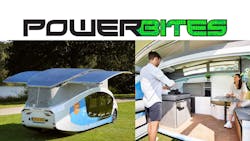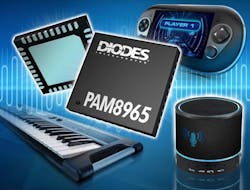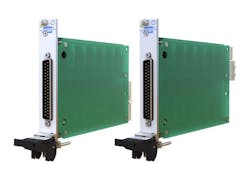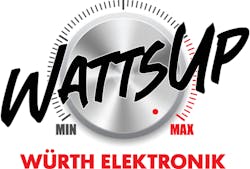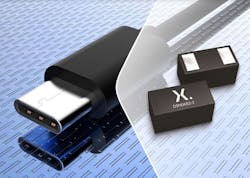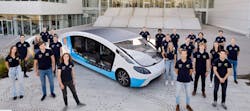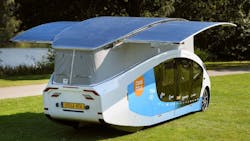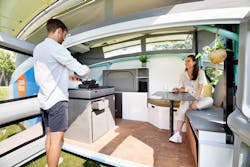This Week in PowerBites: 1,800-Mile Trip on a Solar-Electric RV
This article is part of the Power Management Series: This Week in PowerBites
High-Efficiency DC-DC Converter Optimized for Automotive H2 Fuel Cells
Optimized for use in fuel-cell electric vehicles (FCEVs), BrightLoop Converters' DCHV320 is the latest addition to the company’s family of dc-dc converter designed specifically for hydrogen-fuel-cell applications. Unlike conventional converters, BrightLoop's products can operate efficiently across the wide range of output voltages produced by fuel cells during their warm-up and operational modes.
Like all products in BrightLoop Converters family, the DCHV320 offers high power density and low weight, and is extremely versatile. It’s fully reversible, operates in buck or boost mode, and multiple converters can be paralleled to meet the needs of higher-power fuel cells.
A few characteristics of the product:
- Voltage range: 50-900 VDC
- Maximum current: 320 A
- Maximum power: 200 kW (parallelizable for increased power)
- Auxiliary power supply: 9 to 56 V
- Efficiency: 99% (for step ratio of 1:2)
- CAN remote communication and monitoring
- Liquid cooling
- Weight: <10kg
The first units will be available in Q1 2022.
The DCHV320 is the first member of a new product line that will include higher and lower current ratings, buck-boost configurations for overlapping input- and output-voltage ranges, and a galvanic isolation option. Other versions will be released in Q2 2022.
BrightLoop Converters also offers a range of lower-voltage converters that are optimized for fuel-cell applications with output power levels from 1 kW to 30 kW+. In addition, BrightLoop converters could be used to power many of the winning vehicles in the world's most competitive hybrid and electric racing series, such as Formula 1, Formula E, ETCR, or Extreme E.
For more information, visit https://www.brightloop.fr/en/ or LinkedIn.
Hot Tunes, Cool Runnings: Class-D Stereo Audio Amp Sips Battery Power, Delivers Excellent Sound
Diodes Inc.'s PAM8965 high-efficiency Class-D stereo audio power amplifier is targeted for use in AI-enabled speaker systems and portable musical instruments, where elevated output power, extended battery life, and compact construction are all key requirements.
Thanks to an integrated synchronous boost converter, the PAM8965 can run off a 2.8- to 8.5-V supply and deliver up to 12 W into 4-Ω speakers, via each of its two channels, with 92% efficiency. By incorporating a synchronous boost converter with pulse-frequency-modulation (PFM) operation at light loads, this device not only can deliver augmented performance and efficiency levels, but it also occupies less board space and lowers overall bill-of-materials (BOM) costs.
The product’s spread-spectrum modulation (SSM) provides deep electromagnetic-interference (EMI) suppression across a broad range of frequencies. The lower emission levels allow for the use of inexpensive ferrite-bead filters, instead of more costly and bulky LC filters. The boost converter’s ultrasonic PFM operation minimizes the impact of audible noise emanating from other components situated on the PCB. In addition, Class-D and boost SSM switching is synchronized to avoid beats.
The PAM8965's non-clipping power limit ensures that speakers continue to provide superior audio fidelity without risk of damage. An integrated thermal foldback function reduces output power if the amplifier device starts to overheat. Undervoltage, overvoltage, and short-circuit protection, as well as thermal shutdown, also are included. A low quiescent current of 10 mA helps further conserve battery charge.
The PAM8965, available in a 40-pin W-QFN package, is priced at $0.99 each in 3,000-piece quantities. Datasheets and other information can be obtained by clicking here.
PXI Multi-Cell Battery Simulator Enhances BMS Testing Accuracy
Pickering Interfaces launched a new family of battery simulator modules designed specifically for electric-vehicle (EV) battery-stack emulation in battery-management-system (BMS) test applications. The 41-752A (PXI) and 43-752A (PXIe) modules enable direct voltage and current read-back either programmatically or using Pickering's soft panel control. Each cell simulator is highly accurate, specified at ±5 mV from 1 to 7 V. The new systems eliminate the need to link simulation modules to a separate DMM to achieve voltage and current read-back, making them simpler to use and more accurate.
Targeting EV, automotive, aerospace, energy-storage, and electric-aircraft applications, the new battery simulator modules occupy a single PXI slot. They come with two, four, or six battery-cell simulators per module, which are fully isolated from ground and from each other, facilitating series connection to simulate batteries in a stacked architecture. The 750-V isolation barrier allows the modules to be used to simulate lower-power battery stacks that are commonly utilized for vehicle propulsion. Battery-charging emulation is available up to 100 mA.
Each cell provides independent power and sense connections, enabling the simulator to sense a remote load and correct for wiring losses. The battery simulator is designed to respond to dynamic loads, minimizing the need for local decoupling capacitors at the load. The module also can independently read the voltage at the load (via sense lines) and output current for each cell. When supplied with I/V read-back, the driver will automatically adjust the module's output voltage through a feedback system, helping boost accuracy.
The 41-752A and 43-752A modules benefit from the modularity and scalability of the PXI/PXIe platform, and can be combined with Pickering's other PXI switch and simulation modules, including high voltage switching, fault insertion, thermocouple simulation, RTD simulation, and more. They also can be combined with other vendors' PXI modules, such as a CANbus interface, to create a fully flexible BMS test system.
Users can design their applications with most popular programming languages, including C/C++, .NET, Python, LabVIEW/LabWindows, MATLAB, etc. And they can choose between all Microsoft-supported Windows versions, all popular varieties of Linux, and other hardware-in-the-loop (HIL) operating systems such as VeriStand, LabVIEW RT and QNX.
For more information on signal switching and simulation products or sales contacts, go to www.pickeringtest.com.
A Podcast that Sharpens Your EE Skills with a Weekly Dose of Tech
Each week, the Watts Up Podcast provides engineers with pithy nuggets of engineering know-how on a single topic that typically runs between 10 and 20 minutes. Some of the podcast's topics to date include wireless power transfer, industrial IoT, transformer design, and EMC circuitry. Amelia Thompson, Customer Outreach Analyst with Würth Elektronik, is the producer, writer, and voice of the Watts Up Podcast. Thompson says, “We have witnessed huge growth in our educational presence over the last two years through our monthly webinars. I look forward to bringing in even more education in the coming weeks,” said Thompson.
The Watts Up Podcast is available from multiple audio platforms, including iTunes, Google Podcasts, Spotify, and more. You also can listen to it online at www.we-online.com/podcast.
Advanced Dual MOSFETs Feature Very Low On-Resistance
The QH8Mx5/SH8Mx5 series dual-MOSFET products (N-channel + P-channel) developed by ROHM Semiconductor feature ±40/±60-V withstand voltages and very low on-resistance values. The devices are well-suited for driving motors in base stations (cooling fans) and industrial applications, such as factory automation or robotic equipment requiring 24-V input.
By providing 40- and 60-V withstand voltages, the devices provide 24-V motors with sufficient margin against voltage fluctuations in industrial equipment and base stations. Their ability to support higher speed switching, together with their lower on-resistance, enables more efficient and compact motor/drive systems.
ROHM's sixth-generation 40/60-V dual MOSFETs are fabricated on the latest precision processes for N-channel and P-channel devices, enabling them to achieve up to 61% lower on-resistance than other P-channel MOSFETs in dual-MOSFET products in the ±40-V class. The lower on-resistance contributes to significantly lower power consumption in a variety of applications. Furthermore, integrating two devices into a single package helps miniaturize applications by reducing mounting area and decreases the workload required for component selection (combining N-channel and P-channel).
The company also crafted the +40/+60-V QH8Kxx/SH8Kxx (N-channel + N‑channel) series to support a wider range of needs. In total, ROHM offers 12 models of N-channel + P-channel and N-channel + N-channel devices.
Going forward, ROHM will continue to expand the lineup to include 100- and 150-V products for industrial equipment that demands higher voltages.
Tough Security for Tender Interfaces: USB4 Protection Diodes Minimize Clamping and Capacitance ESD
Nexperia introduced two extremely low clamping and capacitance bidirectional electrostatic-discharge (ESD) protection diodes designed to protect signal integrity for USB4 (up to 2 × 20 Gb/s) data lines on laptops and peripherals, smartphones, and other portable electronic equipment.
The PESD5V0R1BDSF is optimized for low clamping and offers extremely low insertion loss figures of −0.28 dB at 10 GHz and similarly low return loss figures of −19 dB at 10 GHz. The PESD5V0R1BCSF, on the other hand, is optimized for RF performance with insertion loss data of −0.25 dB and return loss data of −19.4 dB at 10 GHz each. This makes it ideal for applications that have very limited budgets for insertion loss and return loss.
Both devices are housed in the ultra-low inductance DSN0603-2 (SOD962-2) leadless package, with a standard 0.6- × 0.3-mm footprint and 0.3-mm profile, with return-loss-optimized solder pads. For USB4, it’s mandatory to have ac-coupling capacitors for the receiver (Rx) inputs, too.
The voltage rating VRWM of the PESD5V0R1BxSF devices (>2.8 V) allows them to be placed directly behind the connector, which is the preferred position to include these capacitors to achieve the best system-level ESD performance. This voltage rating makes them backwards-compatible with all standards that can connect over USB Type-C. Along with USB4, this includes USB 3.2, the older USB3.x, as well as Thunderbolt and HDMI2.1 (in HDMI Alt Mode) data lines, with HDMI2.1 data rates being supported up to 48 Gb/s (4 × 12) and Thunderbolt up to 40 Gb/s (2 × 20). At the same time, TrEOS technology ensures very low ESD voltage clamping to protect sensitive transceivers.
For more information on the new PESD5V0R1BxSF ESD protection devices, including product specifications and datasheets, visit www.nexperia.com/USB4protection.
Student-Designed, Solar-Powered RV Completes 1,800-Mile Demo Tour
Will your next recreational vehicle be electric? Probably not, but if a talented team of Dutch Engineering students has its way, the one after that probably will be an EV. In fact, a sleek-looking, solar-powered camper van, designed by 22 students from Eindhoven University of Technology, recently completed an 1,800-mile tour across Europe, traveling from the Netherlands to the southern tip of Spain. Dubbed "Stella Vita," the solar camper provides two people with a comfortable place to live, cook, bathe, and relax while on the road, operating mostly on the power it receives from its onboard solar arrays.
Building a solar vehicle that can survive the rigors of less-than-perfect roads, and mix comfortably with the traffic that inhabits them, presents many challenges. Fortunately, Stella Vita's creators brought many of the lessons they learned from building cars that won the World Solar Challenge competition four years in a row to the design process. The team used their experience with designing sturdy, lightweight, and highly aerodynamic structures to create a rugged aluminum chassis that supports a low-slung, curvaceous cabin with a pop-up roof that extends across nearly its entire length.
Although Stella Vita's design borrows much of its technology and design philosophy from four generations of solar race cars, its interior is a radical departure from its predecessors' cramped, Spartan cockpits. With the pop-up roof raised, travelers can stand up in a well-designed living space that has a kitchen, dining/lounge area, a large double bed, and ample storage. There’s also a pop-up enclosure that houses a toilet and shower.
The camper has a top speed of 120 kph, although it normally cruises at 60-90 kph to stretch the range of its 60-kWh Li-ion battery to as far as 600 km. The camper's roof is an 8.8 m2 solar array that can add up to 130 km to the vehicle's battery-only range. Once parked for charging, the roof has two other panels that can be deployed, for a total of 17.5 m2. In addition to charging the battery and running the camper's lighting, TV, internet system, and other appliances, the extended panels also serve as a canopy where the crew can lounge, cook, or plan the next leg of the trip.
It takes 2-3 days for the panels to fully charge the battery. However, if you’re in a hurry, the camper has a port that allows it to accept power from an ac outlet, as well as most EV charging stations. "On a cloudy day, the vehicle can still produce 60-70% of the energy,” said Dr Carlo van der Weijer, who has been the team’s coordinator. “And even if there is no sun at all, you still have an efficient, normal electric car that you can charge from a charging port."
The students drove at an average speed of almost 80 km/h and only had to supplement their on-board solar power with an additional 71.24 kWh from charging stations along the way. This represents roughly 10% of the power an ordinary (non-solar) electric car would consume during the same trip.
The students' recently completed 1,800-mile demonstration tour was not without challenges and setbacks, including a problem that necessitated getting a lift aboard a truck on a few stages of its journey. Despite this, the team managed to travel under its own power to close to a dozen other cities. At those spots, they demonstrated their vehicle and discussed issues related to sustainability at companies, universities, governmental institutions, and public events.
The team said that they will use much of what they learned in those discussions as they define and develop their next project. Their hope is that what they shared will help inspire others to create vehicles that are more sustainable, as well as more fun, to operate.
To learn more about Stella Vita, its journey, and Solar Team Eindhoven's other projects, you can click here to visit their web site.
Read more from the Power Management Series: This Week in PowerBites
